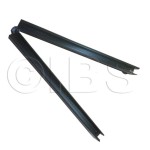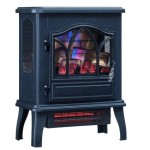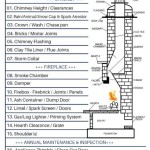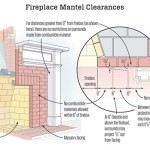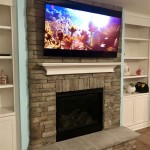Best Gas Fireplaces: A Comprehensive Guide to Choosing the Right Model
Gas fireplaces offer a convenient and efficient alternative to traditional wood-burning fireplaces. They provide instant heat, require minimal maintenance, and can be installed in a variety of locations. This article aims to provide a comprehensive overview of gas fireplaces, exploring their different types, key features, and factors to consider when selecting the best model for specific needs.
Gas fireplaces are categorized based on their design, venting systems, and fuel source. Understanding these distinctions is crucial for making an informed purchasing decision. The primary types include direct vent, vent-free, and B-vent fireplaces. Each type possesses unique characteristics regarding installation requirements, efficiency, and safety regulations.
Direct Vent Gas Fireplaces: Safety and Efficiency
Direct vent fireplaces are considered one of the safest and most efficient options available. These fireplaces draw combustion air from outside the home and exhaust fumes directly outside through a sealed venting system. This sealed system prevents indoor air from being used for combustion, reducing the risk of carbon monoxide poisoning and minimizing heat loss. The venting system typically consists of two concentric pipes, one for intake and one for exhaust, allowing for horizontal or vertical termination.
Installation of a direct vent fireplace is typically more complex than vent-free models, requiring professional installation to ensure proper sealing and venting. However, the added safety and efficiency often outweigh the installation costs. Direct vent fireplaces are compatible with both natural gas and propane, offering flexibility in fuel source selection. Their sealed design also allows for greater design flexibility, as they can be installed on exterior walls without requiring a traditional chimney.
In terms of aesthetics, direct vent fireplaces offer a wide range of styles, from traditional log sets to contemporary glass media. Many models also include features such as adjustable flame height, remote control operation, and thermostatic control for precise temperature regulation. These features contribute to both convenience and energy efficiency, allowing for customized heating based on individual preferences and needs.
Vent-Free Gas Fireplaces: Convenience and Limitations
Vent-free, or ventless, gas fireplaces offer a convenient and relatively inexpensive heating solution. These fireplaces do not require any venting to the outside, making them easier to install in existing homes or spaces without a chimney. They burn natural gas or propane cleanly enough that the exhaust gases are deemed safe to release directly into the living space. However, vent-free fireplaces are subject to specific regulations and limitations due to concerns about indoor air quality.
The primary concern associated with vent-free fireplaces is the potential for carbon monoxide buildup. While modern vent-free models are equipped with oxygen depletion sensors (ODS) that automatically shut off the fireplace if carbon monoxide levels become too high, they still require careful monitoring and adherence to safety guidelines. It is crucial to ensure adequate ventilation in the room where a vent-free fireplace is installed, and carbon monoxide detectors should be installed and maintained regularly.
Furthermore, some individuals may experience discomfort or respiratory issues due to the release of combustion byproducts into the air. Vent-free fireplaces can also contribute to increased humidity levels in the home, which may be problematic for individuals with allergies or respiratory conditions. For these reasons, vent-free fireplaces are not recommended for use in bedrooms, bathrooms, or small, enclosed spaces. Their use may be restricted or prohibited in certain jurisdictions, so it's crucial to verify local building codes before purchasing and installing one.
B-Vent Gas Fireplaces: A Traditional Approach
B-vent gas fireplaces represent a more traditional venting approach, utilizing an existing chimney or vent system to exhaust combustion gases. These fireplaces draw combustion air from within the home and rely on natural draft to vent the exhaust outside. B-vent fireplaces are typically less efficient than direct vent models, as they can contribute to heat loss through the chimney. However, they offer a viable option for homeowners who want to maintain the aesthetic of a traditional fireplace without the hassle of wood-burning.
Installation of a B-vent fireplace requires a properly sized and functioning chimney or vent system. It is essential to have the chimney inspected and cleaned by a qualified professional before installing a B-vent fireplace to ensure proper draft and prevent the risk of carbon monoxide poisoning. B-vent fireplaces are typically less expensive to purchase than direct vent models, but the cost of chimney maintenance and potential heat loss should be considered when evaluating their overall value.
B-vent fireplaces are available in a variety of styles, ranging from traditional log sets to more contemporary designs. They may also include features such as adjustable flame height and remote control operation. However, their reliance on natural draft can make them more susceptible to performance issues, such as backdrafting, especially in homes with poor insulation or ventilation. Regular maintenance and inspection are crucial to ensure the safe and efficient operation of a B-vent gas fireplace.
Beyond the venting system, other factors influence the choice of a gas fireplace. These include the fireplace’s heat output (measured in BTUs), the size of the space being heated, aesthetic preferences (log sets, glass media, contemporary designs), and additional features like remote controls, thermostats, and safety mechanisms.
BTU (British Thermal Unit) output directly correlates with the fireplace’s ability to heat a given space. Larger rooms require higher BTU outputs. Manufacturers typically provide guidelines on the recommended BTU range for different room sizes. Overestimating the BTU output can lead to overheating, while underestimating it may result in insufficient heating. It's recommended to calculate the square footage of the room and consult with a professional to determine the appropriate BTU rating. Factors such as insulation, window size, and ceiling height can also impact the heating requirements.
The aesthetic appeal of a gas fireplace is a significant consideration for many homeowners. Gas fireplaces are available in a wide range of styles, from traditional log sets that mimic the appearance of a wood-burning fireplace to more contemporary designs featuring glass media or stone accents. The choice of styling depends on individual preferences and the overall décor of the room. Many manufacturers offer customizable options, allowing homeowners to select the log set, media type, and firebox design that best suits their style.
Additional features can enhance the convenience and functionality of a gas fireplace. Remote controls allow for easy adjustment of flame height and temperature, while thermostats provide precise temperature regulation. Safety features such as oxygen depletion sensors (ODS) and automatic shut-off mechanisms are crucial for ensuring safe operation. Some models also include features such as electronic ignition, which eliminates the need for a pilot light, and variable flame height controls, which allow for customized flame intensity.
The installation process for a gas fireplace varies depending on the type of fireplace and the existing infrastructure. Direct vent fireplaces typically require professional installation to ensure proper venting and sealing. Vent-free fireplaces are generally easier to install, but they still require careful attention to safety guidelines and ventilation requirements. B-vent fireplaces require a properly sized and functioning chimney or vent system. It is always recommended to consult with a qualified professional to ensure safe and code-compliant installation.
Regular maintenance is essential for ensuring the safe and efficient operation of a gas fireplace. This includes cleaning the burner assembly, inspecting the venting system, and checking the gas connections. Direct vent fireplaces should be inspected annually by a qualified professional to ensure that the venting system is properly sealed and free of obstructions. Vent-free fireplaces require more frequent cleaning to prevent the buildup of dust and debris on the burner assembly. B-vent fireplaces require regular chimney inspections and cleaning to prevent creosote buildup and ensure proper draft.
The cost of a gas fireplace can vary depending on the type, size, features, and installation requirements. Vent-free fireplaces are typically the least expensive option, while direct vent fireplaces are generally more expensive due to their more complex venting system. Installation costs can also vary depending on the complexity of the installation and the labor rates in the area. When evaluating the cost of a gas fireplace, it is important to consider not only the initial purchase price but also the ongoing maintenance and operating costs.
Selecting the best gas fireplace involves a careful evaluation of individual needs, preferences, and budget. Considering the different types of gas fireplaces, their features, installation requirements, and maintenance needs is crucial for making an informed decision. Consulting with a qualified professional can provide valuable guidance and ensure that the chosen fireplace meets all safety and code requirements.

Best Gas Fireplace Inserts Fireplaces Direct Learning Center

The Best Gas Fireplaces Of 2024 Direct Learning Center

5 Surprising Facts About The Best Gas Fireplaces

The 7 Best Gas Fireplaces Of 2024

Gas Fireplaces Va Bon Air Hearth Porch And Patio

How To Buy A Gas Fireplace Insert Buyer S Guide From Regency

5 Surprising Facts About The Best Gas Fireplaces

The Best Gas Fireplaces Of 2024 Direct Learning Center

All About Gas Fireplaces Advice We Love Fire

Gas Fireplaces Best Fire Hearth Patio
Related Posts


